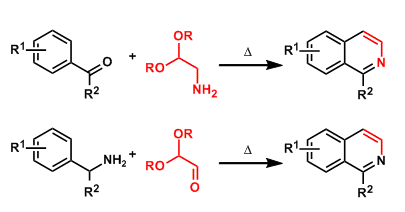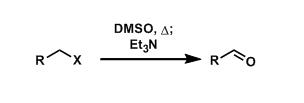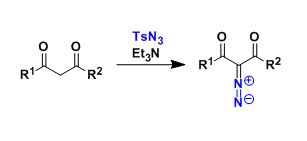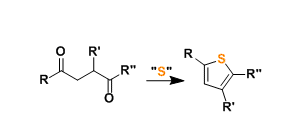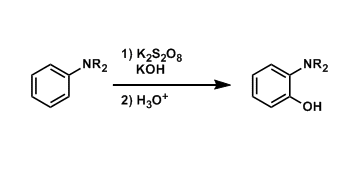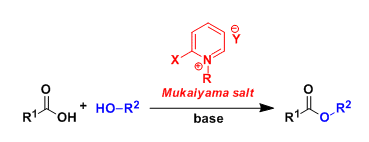General Characteristics β-Keto methyl esters undergo decarboxylation under near neutral conditions upon heating in the presence of lithium chloride in DMSO. This reaction is particularly useful when ...
Posts by Category: Reactions
Marko-Lam Deoxygenation
General Characteristics The deoxygenation of alcohols via p-toluic acid esters under single-electron reduction conditions is known as the Marko-Lam deoxygenation. It has advantages over the ...
Pomeranz-Fritsch Isoquinoline Synthesis
General Characteristics The condensation of benzaldehydes or arylketones with aminoacetaldehyde acetals gives isoquinolines. Alternatively, the condensation of benzylamines with glyoxal hemiacetals ...
Kornblum Oxidation
General Characteristics Alkyl halides can be converted into the corresponding aldehydes by thermally driven displacement by DMSO followed by treatment with bases. General References ・Kornblum, N.; ...
Liebeskind-Srogl Cross Coupling
General Characteristics Ketones can be synthesized by the palladium-catalyzed cross coupling between thioesters and boronic acids. The use of copper thiophene-2-carboxylate (CuTC) as an additive is ...
Polonovski Fragmentation
General Characteristics The acylation of amine N-oxides with acid chlorides or acid anhydrides leads to bond fragmentation at the α-position, yielding the corresponding amides and aldehydes as ...
Regitz Diazo Transfer
General Characteristics Activated methylene compounds react with sulfonyl azides and related reagents to give the corresponding diazo compounds. These diazo compounds are used as 1,3-dipoles or ...
Paal-Knorr Thiophene Synthesis
General Characteristics The condensation of 1,4-dicarbonyl compounds with sulfur sources gives thiophenes. Phosphorus pentasulfide (P4S10) and the Lawesson’s reagent are typically used as the sulfur ...
Boyland-Sims Oxidation
General Characteristics Anilines can be converted into aminophenols by the reaction called the Boyland-Sims oxidation. Ortho-hydroxylated products are usually obtained preferentially. The oxidation ...
Mukaiyama Condensation Reagent
General Characteristics First introduced in 1970’s, 2-halo-N-alkylpyridinium salts are called the Mukaiyama reagent and used for condensation reactions such as esterification and amide bond ...



